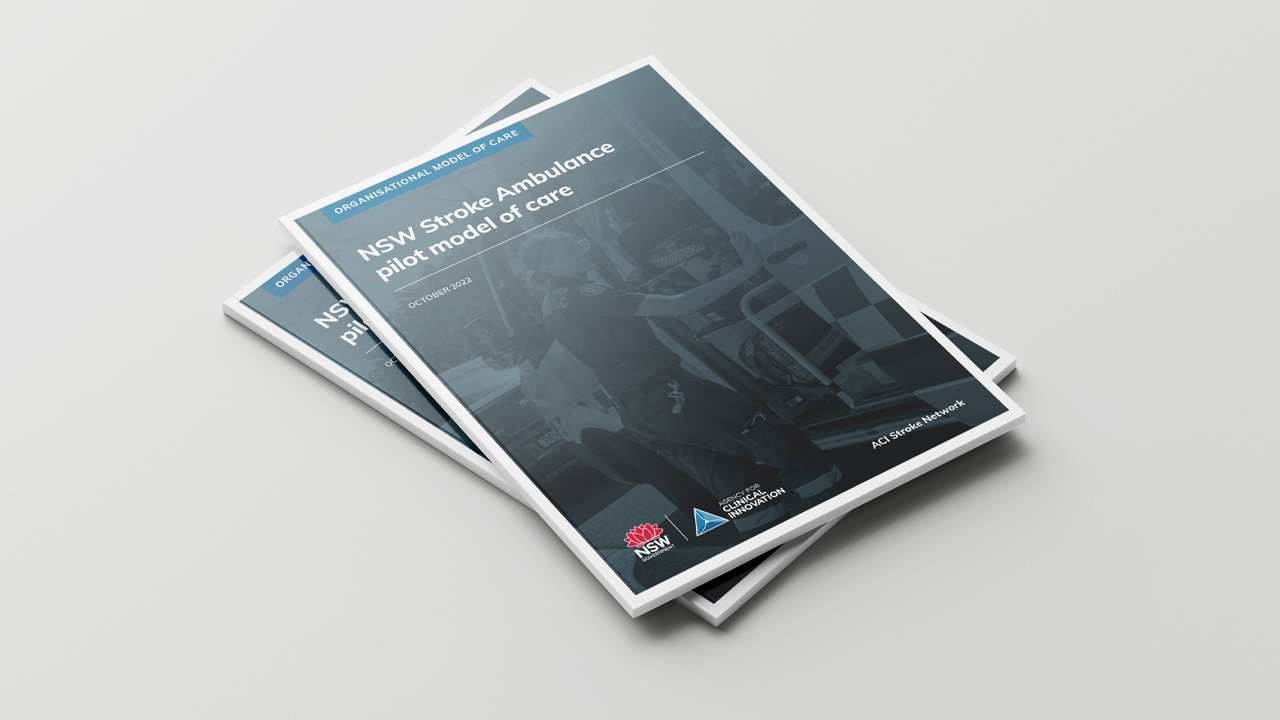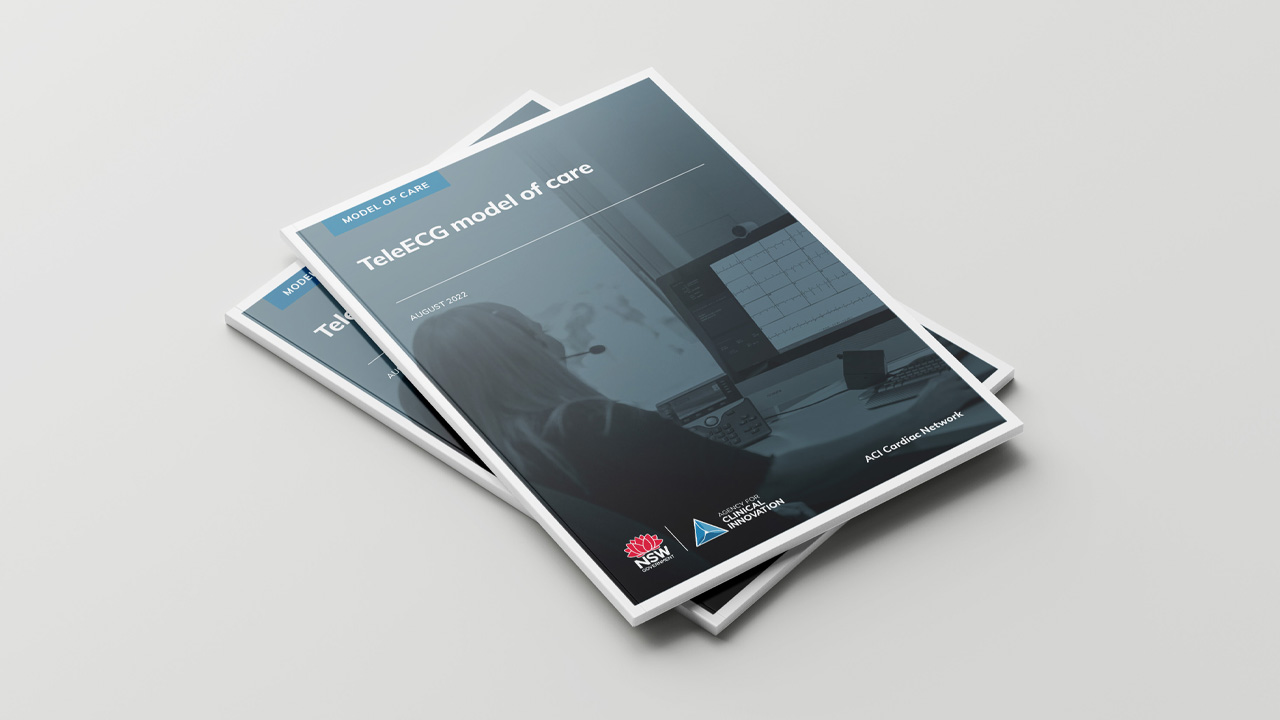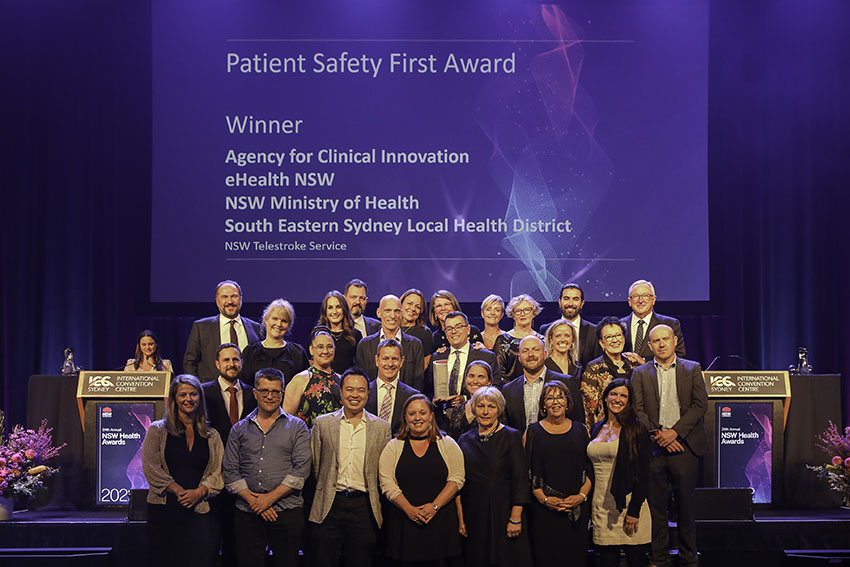Adopting a pipeline of
innovation
Our pipeline of innovation enables us to pilot promising innovations locally, and support the spread and scale of high-value projects across NSW Health.
Pipeline of innovation

Piloting promising innovations
Stroke Ambulance
The ACI Stroke Network developed a pilot NSW Stroke Ambulance Model of Care.
- The model aims to improve treatment times, patient outcomes and the speed and accuracy of pre-hospital triage.
- Stroke Ambulance is a mobile referring site of the NSW Telestroke Service and has the capability to diagnose stroke patients; administer thrombolysis; and directly transport patients to comprehensive stroke centres.

Spread of high-value innovations
Preparing patients for surgery
Prehabilitation for surgical patients can lead to a faster recovery and better patient experiences and outcomes, and reduce demands on the healthcare system.
- Our Surgical Services Taskforce developed Prehabilitation: Key Principles for Preparing Patients for Surgery, in collaboration with clinicians and consumers.
- It outlines how multidisciplinary teams design unique programs to support patients undergoing surgery.
- We have supported the spread of local innovations and lessons learned by publishing case studies of existing prehabilitation sites in NSW.
- This is an initiative of the NSW Health Elective Surgery Improvement Plan.

Enhanced Recovery After Surgery (ERAS)
As part of the NSW Health Elective Surgery Improvement Plan, we led a pilot, testing multimodal perioperative care pathways designed to achieve early recovery after colorectal surgery.
- Six key principles were prioritised for implementation.
- A working group involving surgeons, anaesthetists, nurses and allied health staff assisted with local implementation.
- Local sites can use the Audit and Feedback Tool to measure against the key principles.
- Attitudes towards the importance of ERAS interventions in colorectal surgery were recently published.
Evidence suggests that compliance with 70–80% (or more) of the ERAS protocol elements can improve outcomes.
TeleECG
Building on a successful pilot at Hunter New England LHD, the ACI’s Cardiac Network developed the pilot NSW TeleECG Model of Care, in partnership with the LHD and Hunter Medical Research Institute.
- The model aims to improve access to diagnosis and treatment for patients living in rural NSW, with suspected acute coronary syndrome.
- TeleECG offers decision support for emergency department clinicians in rural hospitals by linking them to specialist nurses, using a range of virtual care technologies.
- To support the spread of the model, we established the TeleECG Working Group, bringing together representatives from the ACI’s Emergency Care Institute and Virtual Care team; the Ministry of Health; eHealth; and Hunter New England, Murrumbidgee, Northern NSW, Southern NSW and Western NSW LHDs.

Scaled innovations
Built on a foundation of pilot work, the NSW Telestroke Service is changing the lives of people living in regional and rural communities, providing access to life-saving, clot-busting treatments they would not otherwise have.
- In 2017–18, our Stroke Network worked with two regional LHDs to pilot the Telestroke Program.
- The ACI partnered with eHealth NSW, the Ministry of Health and South Eastern Sydney LHD to structure a state-based approach to scaling the service.
- By 2022, the service was scaled to 23 rural and regional hospitals in NSW, linking stroke patients to specialist stroke care, using virtual care technologies.
- The NSW Telestroke Service won two 2022 NSW Health Awards in the ‘Patient Safety First’ category and the ‘Secretary’s Award for Integrated Value Based Care'.
Telestroke’s success would have not been possible without the support of NSW LHDs and NSW Ambulance.
The NSW Telestroke Service has improved health outcomes for 3,000+ stroke patients in regional and rural NSW.
